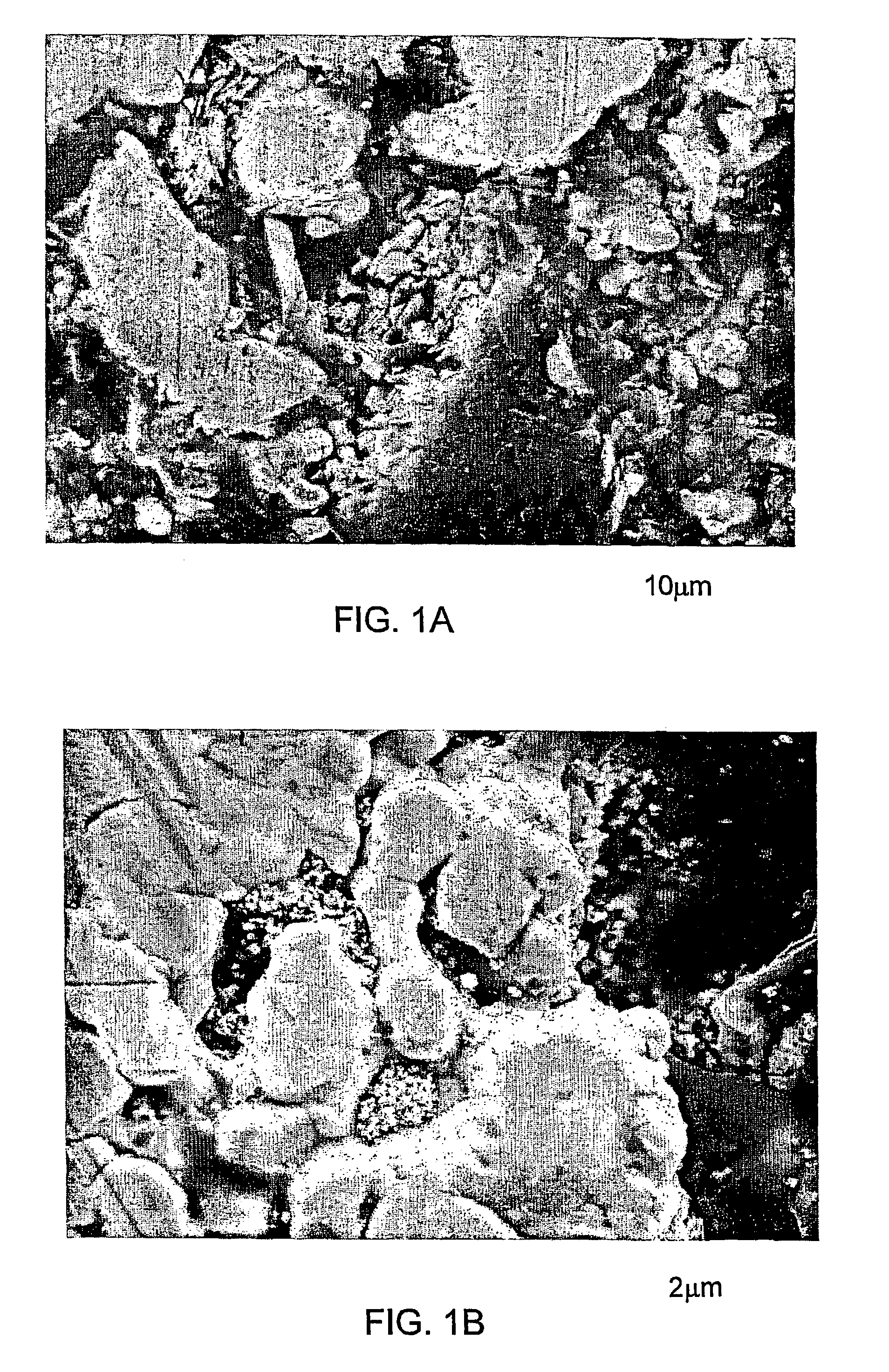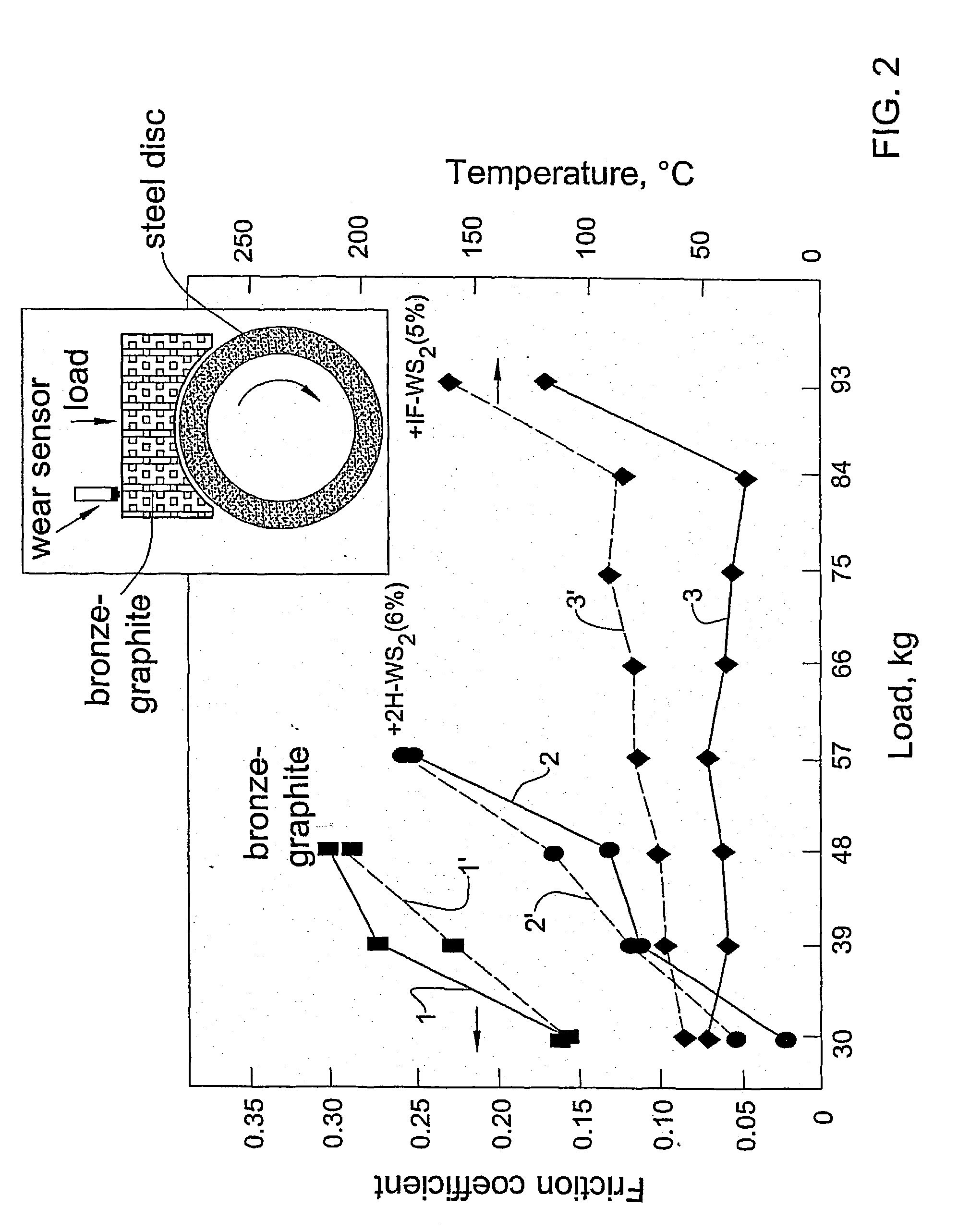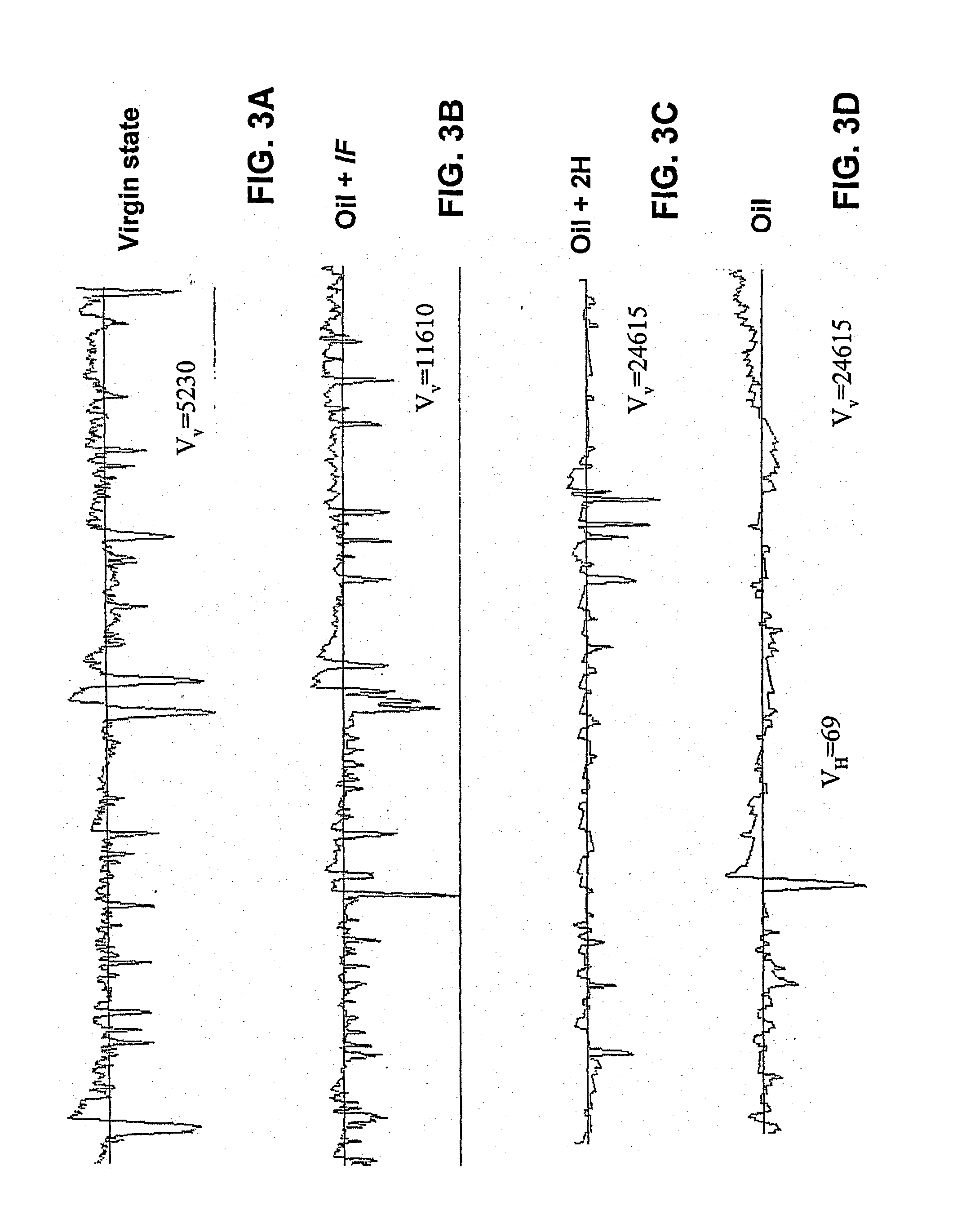Hollow fullerene-like nanoparticles as solid lubricants in composite metal matrices
- Summary
- Abstract
- Description
- Claims
- Application Information
AI Technical Summary
Benefits of technology
Problems solved by technology
Method used
Image
Examples
example 1
[0036] Some metal powders, providing low friction (used in self-lubricating sliding bearings like bronze, bronze-graphite, ferrous-graphite and other alloys and composites), were agitated with low melting point organic materials, like carbomethyl cellulose, which contribute to the pore formation and then were pressed in cold state. In this case the samples of bronze-graphite were sintered in hydrogen atmosphere at 750.degree. C. Subsequently, oil impregnated with 2H-WS.sub.2 and IF-WS.sub.2 nanoparticles were carried-out into the porous metal matrixes in vacuum. Afterwards, the samples were dried at 100.degree. C. in order to exclude the lubricant and other additives. Finally, the samples were repressed up to a porosity of 25-30%. The composition of the metal powder is as follows: Cu-86.4%; Sn-9.6%; graphite 4%.
[0037] FIGS. 1A and 1D show images of metal surfaces acquired with a Scanning Electron Microscope (SEM). FIG. 1A is the SEM image of a sintered bronze-graphite block with 2H-...
example 2
[0038] FIG. 2 illustrates the effect of load (in kg) on friction coefficient (1,2,3) and temperature (1',2',3') of oil-dried porous bronze-graphite block against hardened steel disk (HRC 52). In these experiments, after a run-in period of 10-30 hours, the samples were tested under a load of 30 kg and sliding velocity of 1 m / s for 11 hr. Subsequently, the loads were increased from 30 kg with an increment of 9 kg and remained 1 hr under each load. (1,1') reference sample; (2,2') matrix with 2H-WS.sub.2 (6 wt. %) (3,3') matrix with (5 wt %) IF-WS.sub.2 nanoparticles. The average roughness (Ra) values (in .mu.m) were: virgin surfaces- 2; bronze-graphite+2H-WS.sub.2 platelets -0.28; bronze-graphite+IF-WS.sub.2 nanoparticles- 0.75.
[0039] For low loads, all the sintered samples exhibit relatively low friction coefficient. As the load increases beyond a certain critical value, the friction coefficient and temperature increase abruptly, signifying the seizure of the friction pair.
[0040] The ...
example 3
[0044] In another series of experiments, the lifetime of the metal piece with and without the solid lubricant was compared under relatively harsh conditions. After a run-in period similar to the one used in the previous experiments, the load was gradually increased to 60 kg at sliding velocity of 1 m / s. The lifetime of the metal piece containing 6 wt. % of 2H-WS.sub.2 platelets was found to be less than one hour before seizure took place. Under the same conditions, the metal piece containing 5 wt. % IF-WS.sub.2 survived for 18 hours before seizure, i.e. 20 times improvement in the lifetime of the metal piece. The dry metal-piece seized before this load could be reached (after the run-in period). These results are consistent with the previous results and they allude to the substantial gains in lifetime of metal pieces impregnated with such tiny amount of the hollow nanoparticles.
PUM
| Property | Measurement | Unit |
|---|---|---|
| Fraction | aaaaa | aaaaa |
| Fraction | aaaaa | aaaaa |
| Angle | aaaaa | aaaaa |
Abstract
Description
Claims
Application Information
 Login to View More
Login to View More - R&D
- Intellectual Property
- Life Sciences
- Materials
- Tech Scout
- Unparalleled Data Quality
- Higher Quality Content
- 60% Fewer Hallucinations
Browse by: Latest US Patents, China's latest patents, Technical Efficacy Thesaurus, Application Domain, Technology Topic, Popular Technical Reports.
© 2025 PatSnap. All rights reserved.Legal|Privacy policy|Modern Slavery Act Transparency Statement|Sitemap|About US| Contact US: help@patsnap.com



